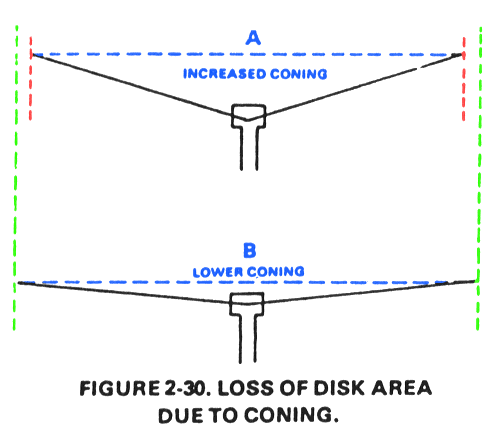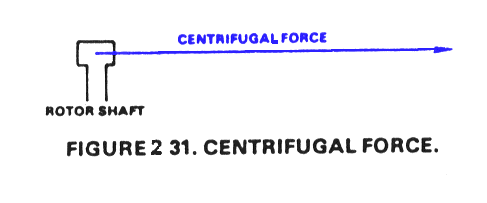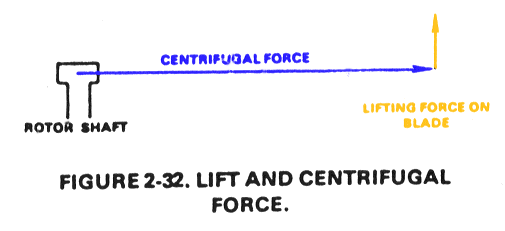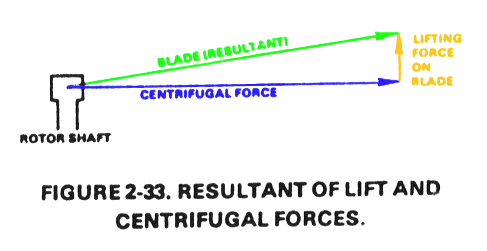
The rotating blades of a helicopter produce very high centrifugal loads on the rotor head and blade attachement assemblies. As a matter of interest, centrifugal loads may be from 6 to 12 tons at the blade root of two to four passenger helicopters. Larger helicopters may develop up to 40 tons of centrifugal load on each blade root. In rotary-wing aircraft, centrifugal force is the dominant force affecting the rotor system. All other forces act to modify this force.
When the rotor blades are at rest, they droop due to their weight and span. In fully articulated systems, they rest against a static or droop stop which prevents the blade from descending so low it will strike the aircraft (or ground!). When the rotor system begins to turn, the blade starts to rise from the static position because of the centrifugal force. At operating speed, the blades extend straight out even though they are at flat pitch and are not producing lift.
As the helicopter develops lift during takeoff and flight, the blades rise above the "straight out" position and assume a coned position. Amount of coning depends on RPM, gross weight, and G-Forces experienced during flight. If RPM is held constant, coning increases as gross weight and G-force increase. If gross weight and G-forces are constant, decreasing RPM will cause increased coning. Excessive coning can occur if RPM gets too low, gross weight is too high, or if excessive G-forces are experienced. Excessive coning can cause undesirable stresses on the blade and a decrease of total lift because of a decrease in effective disk area:

Notice that the effective diameter of the rotor disk with increased coning is less than the diameter of the other disk with less coning. A smaller disk diameter has less potential to produce lift.
Centrifugal force and lift effects on the blade can be illustrated best by a vector. First look at a rotor shaft and blade just rotating:

Now look at the same rotor shaft and blade when a vertical force is pushing up on the tip of the blade:

The vertical force is lift produced when the blades assume a positive angle of attack. The horizontal force is caused by the centrifugal force due to rotation. Since one end of the blade is attached to the rotor shaft, it is not free to move. The other end can move and will assume a position that is the resultant of the forces acting on it:

The blade position is coned and is a resultant of the two forces, lift and centrifugal force, acting on it.